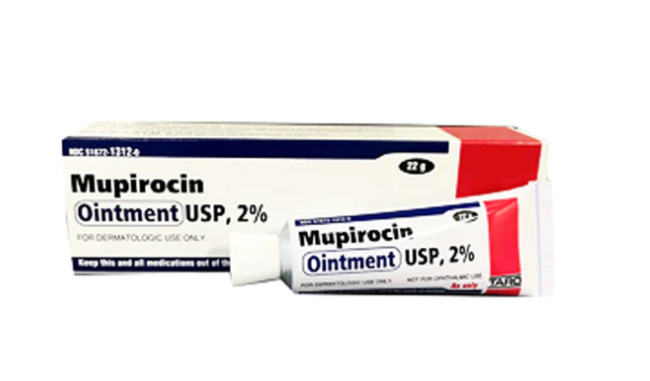Mupirocin Ointment: Uses, Effects & Essential FAQs

Mupirocin ointment, a name that has been gaining traction in the world of medicine, is often prescribed by doctors for various skin conditions. But what exactly is this ointment, and why is it so widely recommended? In this comprehensive guide, we’ll delve deep into the uses, side effects, and commonly asked questions about Mupirocin ointment.
Also Read:- Triamcinolone Acetonide Cream: Uses, Effects & Comparisons
What is Mupirocin Ointment?
Mupirocin ointment is a topical antibiotic cream used to treat bacterial skin infections. It works by stopping the growth of certain bacteria, ensuring that the infection doesn’t spread and giving the body a chance to heal naturally.
How to Use Mupirocin Ointment
Using Mupirocin ointment is straightforward. Clean and dry the affected area first. Then, apply a small amount of the ointment as directed by your doctor, usually 2 to 3 times a day. It’s essential to use it at evenly spaced intervals and continue using it for the full prescribed time, even if symptoms disappear after a few days.
What is the Ointment Mupirocin Used For?
Mupirocin ointment is primarily used to treat skin infections such as impetigo, folliculitis, and furunculosis. It’s effective against gram-positive bacteria, including strains of Staphylococcus aureus and Streptococcus pyogenes.
Is Mupirocin Ointment a Strong Antibiotic?
Yes, Mupirocin is considered a potent antibiotic. It’s specifically designed to combat certain bacteria that cause skin infections. Its strength lies in its ability to target and eliminate these bacteria effectively.
Can I Apply Mupirocin on an Open Wound?
Mupirocin ointment can be applied to minor cuts, scrapes, or burns. However, it’s crucial to consult with a healthcare professional before using it on deep wounds, puncture wounds, animal bites, or serious burns. Always ensure the wound is clean before applying the ointment.
Is Mupirocin Ointment a Steroid Cream?
No, Mupirocin ointment is not a steroid cream. It’s an antibiotic ointment designed to treat bacterial skin infections. Steroid creams, on the other hand, are used to reduce inflammation and are often prescribed for conditions like eczema or dermatitis.
Side Effects of Mupirocin Ointment
Like all medications, Mupirocin ointment can have side effects. Common side effects include burning, stinging, itching, or pain at the application site. If these persist or worsen, notify your doctor immediately. Serious side effects are rare but can include blistering, open sores, or signs of a new skin infection.
Conclusion
Mupirocin ointment is a powerful tool in the fight against bacterial skin infections. Its efficacy and broad application make it a go-to for many healthcare professionals. However, as with all medications, it’s essential to use it correctly and be aware of potential side effects. Always consult with a healthcare professional before starting any new medication.
Mupirocin Ointment FAQs
1. What is Mupirocin Ointment?
- It’s a topical antibiotic used to treat bacterial skin infections.
2. How should I use Mupirocin Ointment?
- Clean the area, then apply as directed, usually 2-3 times daily.
3. What’s the primary use of Mupirocin Ointment?
- To treat skin infections like impetigo and folliculitis.
4. Is Mupirocin a potent antibiotic?
- Yes, it’s designed to combat specific skin bacteria effectively.
5. Can I use Mupirocin on open wounds?
- For minor cuts, yes. For deep wounds, consult a doctor.
6. Is Mupirocin a steroid cream?
- No, it’s an antibiotic ointment.
7. Are there side effects?
- Common ones include burning or itching at the application site








